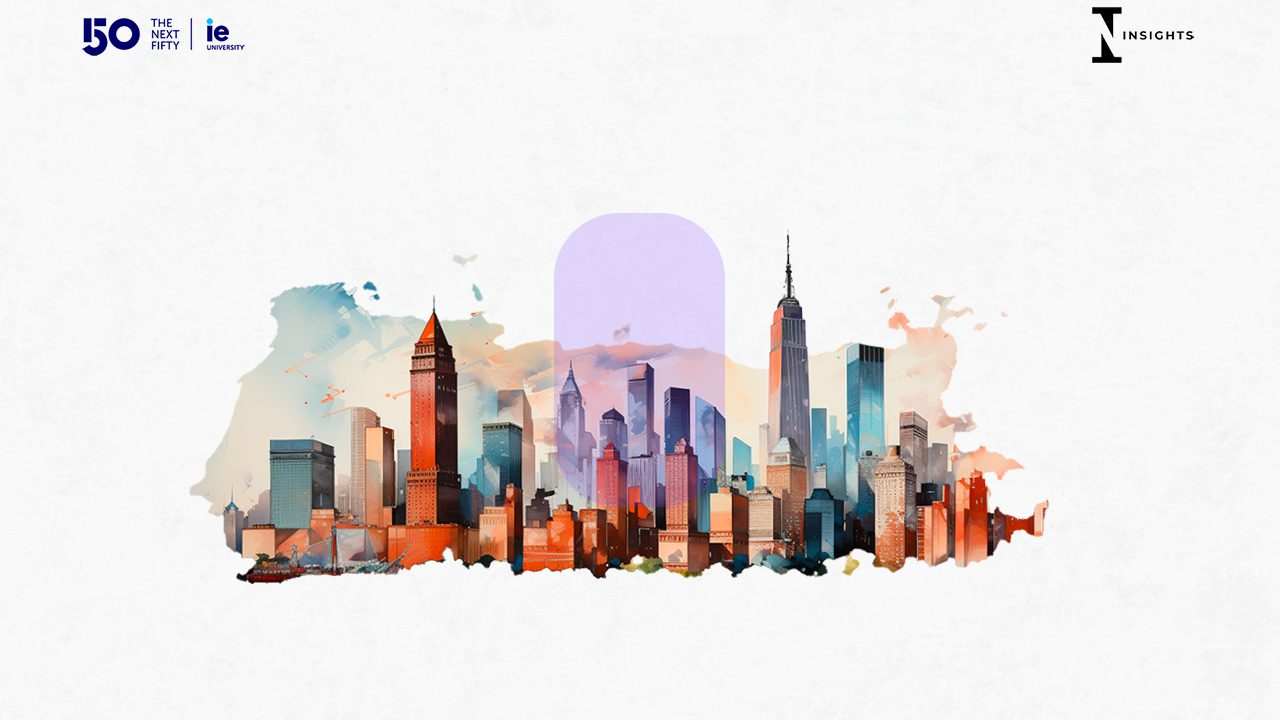Link copied
IE insights - IDEAS TO SHAPE THE FUTURE - Creativity

Creative Industries Will Transform Cities
Cities will be redesigned to meet the demands of the post-industrial, digital and creative workforce.
The cultural and creative industries are among the fastest-growing sectors in the world. With an estimated global worth of 4.3 trillion USD per year, the culture sector now accounts for 6.1% of the global economy with annual revenues of $2.25 trillion USD and nearly 30 million jobs worldwide.
Technology has opened new opportunities for the creative economy – 3D printing, artificial intelligence, augmented and virtual reality, blockchain, cloud computing, drones, and the Internet of Things (IoT) are driving the fourth industrial revolution. This is also impacting the way people (everyone, not just the so-called creative types) live, work, and move around. The need to stay creative in order to remain relevant means that our future entails co-existing with machines and managing the various and increasing options for instant gratification, which can often be followed by instant frustration.
Physical buildings will be called on to respond to this growth in creative industries and to the digital transformation of our lives by housing piles and piles of data – emails, digital files, images – even more so than they are today, becoming data centers in their own right. Factories and warehouses are already taking on new uses such as retail activity while, on the other end of the spectrum, even financial transactions have been removed from their traditional loci to what in real estate terms are called “new asset types.”
How will creative industries shape the cities of the future?
- Clustering of Creative Communities. Cities are places of artistic expression, culture, and economic development and these activities serve to revitalize the city from within – and this includes the adaptive reuse and repurposing of existing structures into new real estate products. Warehouses and underutilized spaces that become apartments and office spaces breathe new life into communities and as traditional industries decline or transform, their physical spaces can turn into studios, galleries, co-working hubs, contributing to the overall growth of the orange economy. This has already happened in Wynwood, Miami, a once-industrial neighborhood now a thriving arts district, and in Kakaako, Hawaii, an up-and-coming hub for artists, designers, and foodies. It is anticipated for London’s Queen Elizabeth Olympic Park, with its new higher education and cultural quarter. Meanwhile, the city of Madrid has renamed neighborhoods to demonstrate their new identities: MADBIT has transformed from an industrial neighborhood into a top digital hub of South Europe, Madrid Content is now the location of Netflix, and Madnum is home to companies including Amazon. As cities attract artists, designers, and other creative professionals – including creative digital workers – they also attract investment that in turn leads to the regeneration of existing communities.
- An increase in collaboration and shared third spaces. New business models based on two parallel forces in the workforce, the core crowd and the mind-machine paradigm, will create more ties amongst self-employed creatives, foster new business opportunities, and increase participation beyond traditional corporate rules. The collaborative nature of the orange economy will likely increase the demand for shared workspaces, collaborative studios, artist collectives, and other so-called third/fourth spaces and shared facilities. This will, in turn, influence the real estate market.
- More focus on sustainability and green spaces. The future heralds an increased demand for eco-friendly and energy-efficient real estate solutions, such as green buildings, eco-districts, and sustainable communities. The need for social sustainability will also increase. Of course, technology impacts our need for interaction and advancements in virtual reality, augmented reality, and other immersive technologies will revolutionize the way people experience art, design, and cultural events. This may reduce the demand for physical exhibition spaces or alter the requirements for real estate in the creative sector and, possibly, increase our feeling of loneliness and isolation. The creative economy must neutralize this by embracing technology to create meaningful social experiences that enhance our lives. In the future, people will want face-to-face contact and it is in physical spaces where this will happen.
The skyline of our cities is being redrawn to meet the demands of the post-industrial, digital and creative workforce – and will continue to do so well into the future.
© IE Insights.
